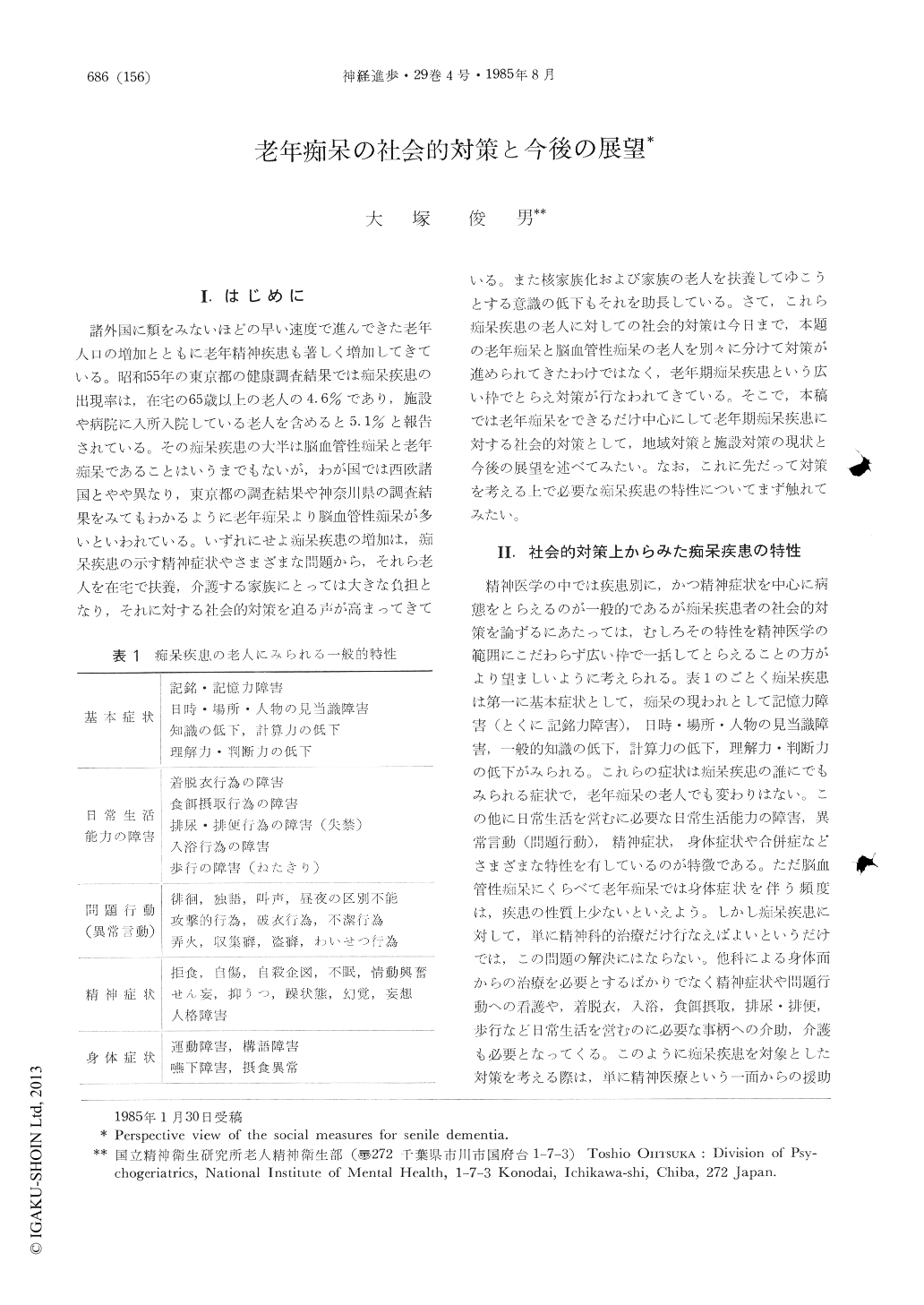Japanese
English
- 有料閲覧
- Abstract 文献概要
- 1ページ目 Look Inside
I.はじめに
諸外国に類をみないほどの早い速度で進んできた老年人口の増加とともに老年精神疾患も著しく増加してきている。昭和55年の東京都の健康調査結果では痴呆疾患の出現率は,在宅の65歳以上の老人の4.6%であり,施設や病院に入所入院している老人を含めると5.1%と報告されている。その痴呆疾患の大半は脳血管性痴呆と老年痴呆であることはいうまでもないが,わが国では西欧諸国とやや異なり,東京都の調査結果や神奈川県の調査結果をみてもわかるように老年痴呆より脳血管性痴呆が多いといわれている。いずれにせよ痴呆疾患の増加は,痴呆疾患の示す精神症状やさまざまな問題から,それら老人を在宅で扶養,介護する家族にとっては大きな負担となり,それに対する社会的対策を迫る声が高まってきている。また核家族化および家族の老人を扶養してゆこうとする意識の低下もそれを助長している。さて,これら痴呆疾患の老人に対しての社会的対策は今日まで,本題の老年痴呆と脳血管性痴呆の老人を別々に分けて対策が進められてきたわけではなく,老年期痴呆疾患という広い枠でとらえ対策が行なわれてきている.そこで,本稿では老年痴呆をできるだけ中心にして老年期痴呆疾患に対する社会的対策として,地域対策と施設対策の現状と今後の展望を述べてみたい。なお,これに先だって対策を考える上で必要な痴呆疾患の特性についてまず触れてみたい。
Abstract
The social measures for coping with elderly demented patients including those suffering from senile dementia, can be divided into two major categories, regional and institutional measures. Regional measures for the care of demented pa-tients are not good enough, and facilities which enable home care arc required. With regard to the institutional measures, the problem of demented patients cannot be solved solely by mental hospi-tals, most of which are entirely medically oriented. More important roles can be played by nursing homes, which are whole life oriented.

Copyright © 1985, Igaku-Shoin Ltd. All rights reserved.


